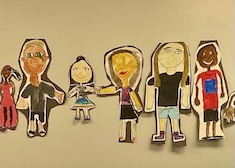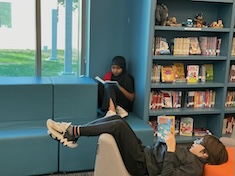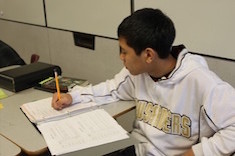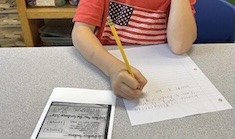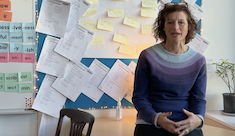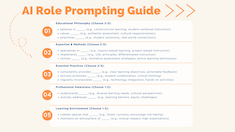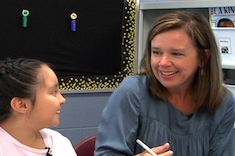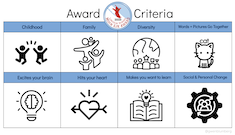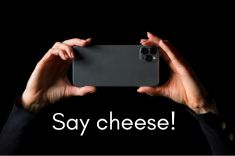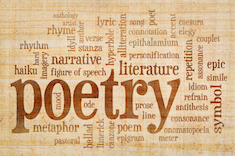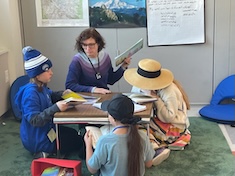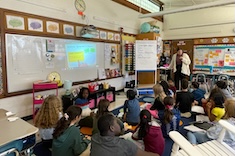3rd
Latest Content
Just Ask Them: Including Students in the Feedback Process
Hypothesizing what our students might be thinking eats into our time to act upon what they’re actually thinking. Heather Fisher suggests, “Let’s just ask the students.” Heather outlines a process for gathering responses from students of all ages and compiling the data to make it useful in determining next steps.
The Right Moment for “I Can” Statements
Mandy Robek reflects on the post-assessments in a new curriculum, and the way students were making simple mistakes that lowered their scores. Mandy experimented with using “I can” statements as part of students’ self-reflection and was impressed by the influence this simple shift had on the post-assessments.
More Than a Self-Portrait
Many elementary teachers begin the school year with the creation of self-portraits. Mandy Robek carries the work from the initial creation throughout the entire school year to strengthen her learning community.
Rethinking Resources: Pausing to Reflect on Old Favorites
Gigi McAlister shares a vulnerable story of realizing a read aloud text she used for many years was racist. She urges us to pause and examine the material we are using with students through different lenses to ensure that we are providing positive learning experiences for all students.
Classroom Tour: Portable Tools for Regulating Emotions
In a classroom tour, Mandy Robek shares a collection of portable and personalized tools to help students regulate their emotions.
Classroom Tour: Whole-Class Meeting Space
In a classroom tour, Mandy Robek shares the purpose and design of her whole-class meeting space.
Classroom Tour: Creating and Living a Classroom Charter
In a classroom tour, Mandy Robek offers a wise approach to developing a classroom vision with her students. They begin by discussing the way they would like to feel in the classroom. Then they determine the actions that will help them feel those ways. Finally, they make a plan for what to do when they don’t feel supported in the classroom.
Classroom Tour: Classroom Supplies
In a classroom tour, Mandy Robek offers a unique and powerful approach to community supplies in her classroom.
Writing in the Wild: Bringing Back Authenticity
Vivian Chen offers big and small ways to make writing instruction more authentic and engaging for your students.
Classroom Tour: Flexible Seating
Mandy Robek shares a variety of seating choices students have in her classroom. She explains the reason for her choices and how she manages a classroom where no one has an assigned seat.
Wheels: Adapting to Change on the Roller Derby Track and in Your Teaching Life
Gwen Blumberg is inspired by a challenging roller derby practice and sees parallels for teachers who are facing challenging situations with changes to literacy curriculums. If something is shifting in your life, this article is sure to offer you confidence in moving forward.
Walking a Teaching-Readers Tightrope: Finding Balance Between Beliefs and Expectations
Hannah Tills offers a much-needed metaphor for all teachers who are implementing a new curriculum resource. Rather than thinking of the new expectations as part of a pendulum, Hannah encourages us to think of walking a tightrope. She offers ways to stay rooted in student engagement, student access, student choice, and teacher autonomy while also meeting expectations of a newly adopted curriculum program.
Classroom Tour: Manipulatives and Books
In a classroom tour, Mandy Robek shares the thoughtful ways she pairs math manipulatives and books while providing easy access to the tools for students. She also promotes engineering and design with access to building blocks and parts.
Four Ways to Use Anchor Charts in the Classroom
Tiffany Abbott Fuller provides a practical and fresh approach to organizing anchor charts in meaningful and helpful ways. Don’t miss the action-oriented summary at the end of the article to put these ideas into place in your classroom.
Classroom Tour: Kinds of Spaces to Help Learning Blossom
Mandy Robek takes time to consider different places students will use in the classroom. She considers books, portable learning spaces, and the way learning will blossom over time in her third-grade classroom.
Creating a Space
Gwen Blumberg clearly outlines different kinds of spaces for our classrooms and libraries. She was inspired by David Thornburg’s Learning Space model where he suggests creating campfires, watering holes, and caves to support different kinds of learning.
What Would You Do?
Tammy Mulligan uses role-play to help her class process different ways to respond to challenging behavior situations. In this video clip, Tammy shares the rationale behind this practice and gives us a glimpse into her students role-playing a situation and their conversations about possible responses.
A Literacy Project Needed Math
Mandy Robek shares the way a Mock Caldecott project naturally connected to the math work happening in her third-grade class.
Beyond “I’m a Third-Grade Teacher”: The Power of Role-Specific Prompting in Educational AI
Brian Sepe helps us understand the importance of prompting and offers a framework that will help us be more intentional and specific to leverage AI for our needs.
Five Things I’ve Used AI for This Week
From lesson planning to generating decodable texts, Dana Murphy shares five ways she uses AI as a reading interventionist.
Not Your Granny’s Grammar: Create Intentional Transfer to Writing
Patty McGee offers strategies to intentionally help students transfer their grammar knowledge to authentic writing experiences in this final installment of the Not Your Granny’s Grammar series.
Not Your Granny’s Grammar: Grammar Manipulatives
Grammar manipulatives create a helpful scaffold to allow students a chance to play and practice, leading to a greater likelihood of transferring skills to their writing. Patty McGee shares a few ideas for grammar manipulatives.
And the Winner Is… Planning and Implementing a Mock Book Award
Gwen Blumberg shares a school-wide approach to a mock book award experience. This clear step-by-step guide with a rich resource download makes it possible to implement in any school.
Not Your Granny’s Grammar: So Long, Grammar of Yore
Patty McGee positions us to consider a fresh approach to grammar instruction in this first installment of a three-part series.
Say Cheese: Sharing Photos to Increase Family and Student Engagement
Most teachers have, at some point, taken a picture of their class or a particular student and shared that photo with a family, but what if teachers became more intentional about taking and sending pictures? Tiffany Abbott Fuller gives practical ideas for using photos to increase family engagement.
The Influence of the Classroom Library
Heather Fisher writes a bold article addressing the many questions educators are facing about their values and beliefs when it comes to our classroom libraries in this time of a heavy emphasis on phonics instruction and decodable books.
Rhyme and Reflect: Fostering Fluency Through Poetry
Joanne Emery recommends using poetry to help children practice their oral expression. She offers many poetry books and strategies for fluency practice.
What Is ORF Anyway?
Dana Murphy reminds us that teaching students to read faster is often a surface-level answer to a much deeper question. Reading is a complex process; if you’re wondering what to do about oral reading fluency scores, then Dana offers powerful encouragement.
Helping Kids Lead Every Day: Differentiate with Precision
Tammy Mulligan shares three ways to precisely differentiate small-group instruction. This is the third installment of a three-part series.
One Size Does Not Fit All: Flexibility in Tool Creation
Sometimes, we ask students to conform to tools that we’ve already created or have found success with when working with former groups of students. However, one size does not fit all. Melissa Quimby shows us how we can be inspired by moments of productive struggle and consider how to help a tool fit our students rather than the other way around.
Browse Content By
Type
Category
- Assessment Tools
- Big Fresh Archives
- Booklists
- Choice Numeracy
- Classroom Design
- Common Core
- Community Building
- Conferring
- Content Literacy
- Digital Literacy
- English Language Learners
- Equity
- Family Relations
- Free Samples
- Guiding Groups
- Leadership
- Literacy Coaches
- Mentor Texts
- Minilessons
- New Teacher Mentors
- Podcasts
- Poetry
- Quote Collections
- Reading Strategies
- Self Care
- Struggling and Striving Learners
- Talking and Listening
- Teacher Study Groups
- Teaching Reading
- Teaching Writing
- Word Study and Vocabulary
Author
- Melissa Quimby
- Nawal Qarooni
- Gwen Blumberg
- Julie Cox
- The Lead Learners
- Hannah Tills
- Josie Stewart
- Ruth Metcalfe
- Mallory Messenger
- Becca Burk
- Jodie Bailey
- Vivian Chen
- Mary Brower
- Tiffany Abbott Fuller
- Stephanie Affinito
- Ruth Ayres
- Leigh Anne Eck
- Heather Fisher
- Shari Frost
- Julie Johnson
- Suzy Kaback
- Gigi McAllister
- Shirl McPhillips
- Melanie Meehan
- Cathy Mere
- Debbie Miller
- Tara Barnett and Kate Mills
- Tammy Mulligan
- Dana Murphy
- Bitsy Parks
- David Pittman
- Brenda Power
- Heather Rader
- Matt Renwick
- Mandy Robek
- Christy Rush-Levine
- Gretchen Schroeder
- Jen Schwanke
- Brian Sepe
- Katherine Sokolowski
- Stella Villalba
- Jennifer Vincent
Grade Level
Choice Literacy Membership
Articles
Get full access to all Choice Literacy article content
Videos
Get full access to all Choice Literacy video content
Courses
Access Choice Literacy course curriculum and training



